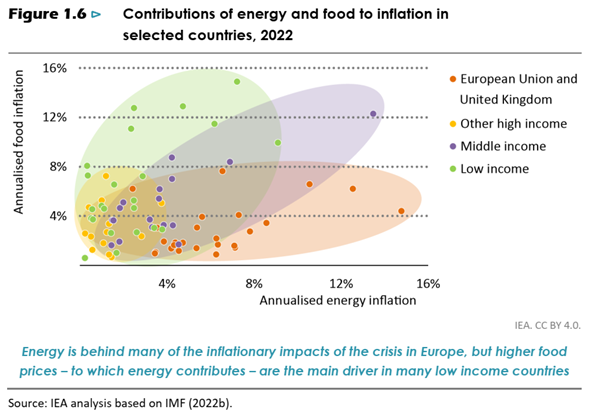Today and tomorrow, @G7 #Energy ministers meet in #Japan – a country, often considered a “laggard” on #energytransition. What is 🇯🇵’s energy system like and why is it so reluctant to step up #decarbonisation of its economy? A 🧵 1/19
env.go.jp/en/earth/g7/20…
env.go.jp/en/earth/g7/20…
The “usual” arguments by the 🇯🇵 government when confronted with lack of both action and ambition on #energytransition:
1. #Japan is resource-poor
2. Japan’s geography limits #renewables build-out
3. Technologies & Innovation will solve the transition
How true are they? 2/19
1. #Japan is resource-poor
2. Japan’s geography limits #renewables build-out
3. Technologies & Innovation will solve the transition
How true are they? 2/19
Japan is indeed poor in some resources, most notably #fossilfuels. Fossil fuel based, its energy system is 88% dependent on #oil, #LNG and #coal imports. It has one of the least self-sufficient energy systems, dependent on #oil & gas from #MiddleEast & #coal from #Australia. 3/19 



High import dependency cost 🇯🇵 dearly last year when record high #LNG prices hit the JKM spot market and #oil prices led to higher prices under long-term contracts. The budget came under strain, subsidizing utilities to offset high electricity prices. 4/19

https://twitter.com/e3g/status/1590652502986268672?s=20

Given how energy intensive #Japan's economy is, it seems a no-brainer that reducing overall energy intensity + its reliance on #fossilfuel imports is the key to its future economic resilience. Is this what #Japan has been doing? 👀 5/19
Not really. #Japan has been praised for its #energyefficiency measures, but looking closer one sees a country that fell behind its peers, owing its energy intensity reduction largely due to economic & population decrease. 6/19
asia.nikkei.com/Spotlight/Data…
asia.nikkei.com/Spotlight/Data…

Has #Japan been reducing its #fossilfuel dependency? The opposite: in 2021 🇯🇵 energy mix had MORE #fossilfuels (86.8%) than in 1990 (84%), w both share of #coal and #gas power & heat increasing, showing but near 0 structural progress in teh system over past three decades. 7/19 

Yes, #Fukushima #nuclear disaster had its toll & reverting to more #coal and #gas in power was an inevitable emergency measure back in 2011.
But it’s been over 10 years since then, during which #renewables share had only marginal growth from 0.6% to 2.8% in 🇯🇵 energy mix. 8/19
But it’s been over 10 years since then, during which #renewables share had only marginal growth from 0.6% to 2.8% in 🇯🇵 energy mix. 8/19

Why has there been so little progress on renewables? The 🇯🇵 government says: “geography” = there’s not enough space for #solar, shores are too deep for offshore #wind.
Sure, high mountains share, deepwater shores & over 6800 islands are a challenge, but not an excuse. 9/19
Sure, high mountains share, deepwater shores & over 6800 islands are a challenge, but not an excuse. 9/19
Much more can be done to deploy more #SolarPV, despite Japan having the highest km2 density of installed solar PV in the world already. By conservative estimates, there are 7600 km2 available for #rooftop solar alone, that’s ca. 4 times #Tokyo area. 10/19 asia.nikkei.com/Spotlight/Envi…
#offshore wind potential in #Japan is immense: fixed turbines (where shore depth allows it) alone can deliver up to 122GW (ca. 1/3 of 🇯🇵 total installed capacity); over 1770 GW capacity of #floating wind turbines are feasible =5x times over the current 🇯🇵 power market size. 11/19 

Going all in on offshore #wind should be #Japan’s strategy No1: @IEA calculated that at 2018 #LNG spot prices, 1GW offshore wind would reduce annual import fuel bills by over $300 million. Imagine how much bigger the cuts are at today’s gas prices! 12/19
iea.org/reports/offsho…
iea.org/reports/offsho…

Not to forget #geothermal power, which can contribute to 23GW additional renewable capacity in #Japan – 3rd biggest potential in the world, while only 0.5GW are installed at the moment. 13/19
irena.org/news/articles/…
irena.org/news/articles/…
So, while failing to act on its vast #renewable potential, what is #Japan doing instead? It’s betting big on maintaining status quo while “decarbonising” existing assets via #ammonia, #hydrogen co-firing & equipping #coal & #gas power with #CCS. 14/19
climateintegrate.org/archives/2700
climateintegrate.org/archives/2700
#Japan’s obsession with #ammonia & #hydrogen in power doesn’t have much economic sense behind it: @bnef estimates average LCOE for #coal plant w 50% ammonia co-firing in 2030 to be higher than TODAY’s #renewables-based electricity 15/19
about.bnef.com/blog/japans-am…
about.bnef.com/blog/japans-am…

Also from #emissions reduction perspective, betting on #ammonia co-firing is a very risky gamble, as mz excellent @e3g colleagues show - both for #Japan & developing Asia where it is pushes for the same approach.
e3g.org/news/explained… 16/19
e3g.org/news/explained… 16/19
Pushing for more #upstream #gas investments seems to be the second strand of #Japan’s current “resilience” strategy. Does it need more gas? No. It has been reducing #LNG imports in the last decade and plans to reduce them further. 17/19
ceicdata.com/en/indicator/j…
ceicdata.com/en/indicator/j…

Back in 19th century #Japan embarked on a massive transformation; catching up w Europe as one of leading industry nations. Today, a new systems shift is required but 🇯🇵 seems unable to shake off its incumbent industry & #fossilfuel lobby interests. 18/19
japan.influencemap.org/policy/GX-Gree…
japan.influencemap.org/policy/GX-Gree…
Unless #Japan enables a true shift of its energy system, tapping onto its #renewables potential, it risks losing the global #cleantech & industrial competitiveness race. As @G7 Pres, JP needs to give a strong signal that it’s ready to move. The world will be watching👀. 19/19 END
• • •
Missing some Tweet in this thread? You can try to
force a refresh

 Read on Twitter
Read on Twitter









